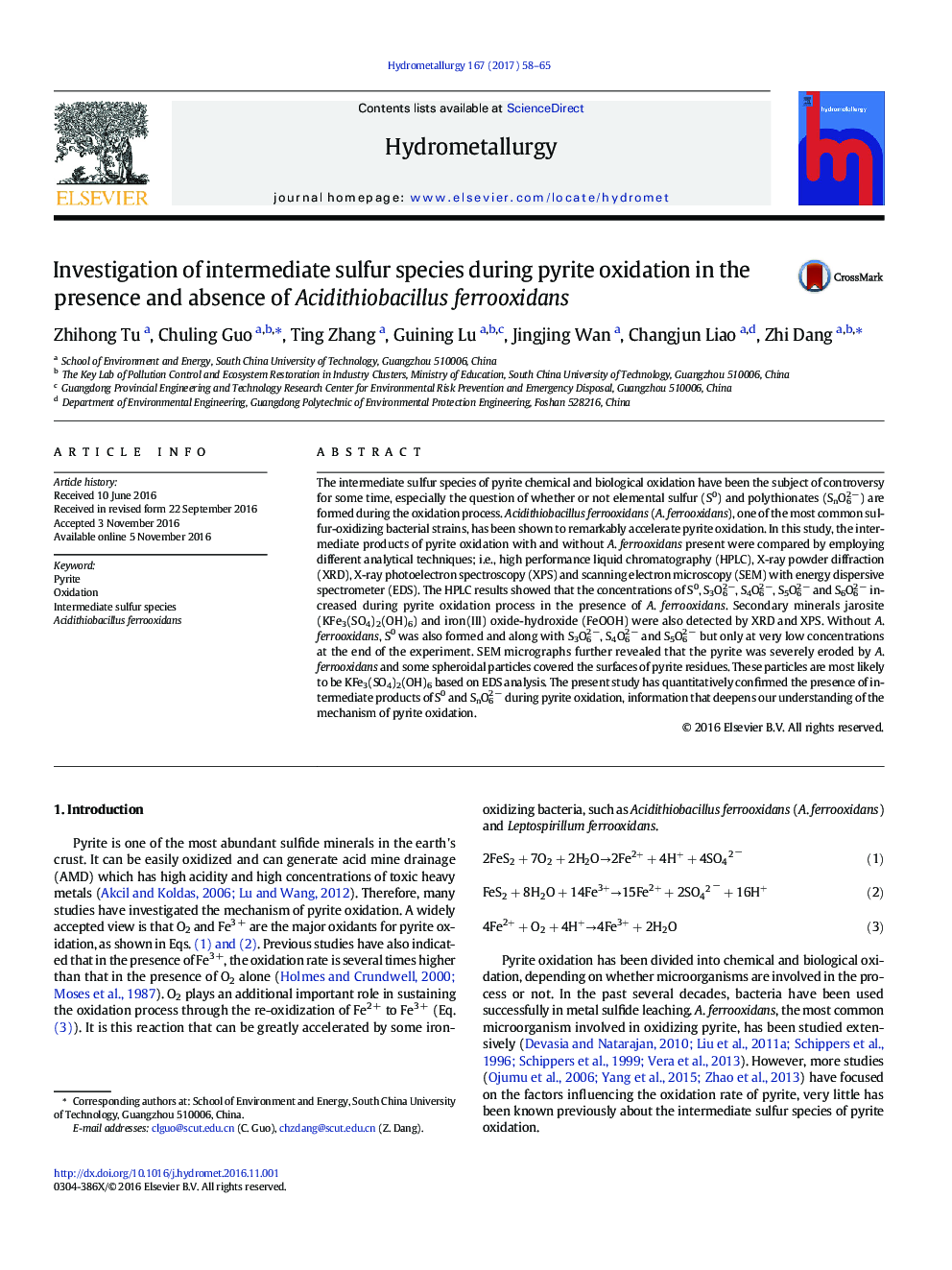| کد مقاله | کد نشریه | سال انتشار | مقاله انگلیسی | نسخه تمام متن |
|---|---|---|---|---|
| 4769386 | 1425537 | 2017 | 8 صفحه PDF | دانلود رایگان |
- HPLC is an efficient technique to detect the S0 and SnO62Â â.
- S0 is formed definitely during pyrite oxidation process.
- Some species of SnO62Â â also formed and their concentrations increased.
- ferrooxidans promoted the pyrite oxidation.
- ferrooxidans accelerated KFe3(SO4)2(OH)6) and FeOOH formation.
The intermediate sulfur species of pyrite chemical and biological oxidation have been the subject of controversy for some time, especially the question of whether or not elemental sulfur (S0) and polythionates (SnO62Â â) are formed during the oxidation process. Acidithiobacillus ferrooxidans (A. ferrooxidans), one of the most common sulfur-oxidizing bacterial strains, has been shown to remarkably accelerate pyrite oxidation. In this study, the intermediate products of pyrite oxidation with and without A. ferrooxidans present were compared by employing different analytical techniques; i.e., high performance liquid chromatography (HPLC), X-ray powder diffraction (XRD), X-ray photoelectron spectroscopy (XPS) and scanning electron microscopy (SEM) with energy dispersive spectrometer (EDS). The HPLC results showed that the concentrations of S0, S3O62Â â, S4O62Â â, S5O62Â â and S6O62Â â increased during pyrite oxidation process in the presence of A. ferrooxidans. Secondary minerals jarosite (KFe3(SO4)2(OH)6) and iron(III) oxide-hydroxide (FeOOH) were also detected by XRD and XPS. Without A. ferrooxidans, S0 was also formed and along with S3O62Â â, S4O62Â â and S5O62Â â but only at very low concentrations at the end of the experiment. SEM micrographs further revealed that the pyrite was severely eroded by A. ferrooxidans and some spheroidal particles covered the surfaces of pyrite residues. These particles are most likely to be KFe3(SO4)2(OH)6 based on EDS analysis. The present study has quantitatively confirmed the presence of intermediate products of S0 and SnO62Â â during pyrite oxidation, information that deepens our understanding of the mechanism of pyrite oxidation.
Journal: Hydrometallurgy - Volume 167, January 2017, Pages 58-65
